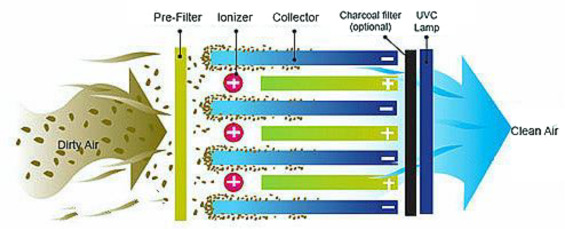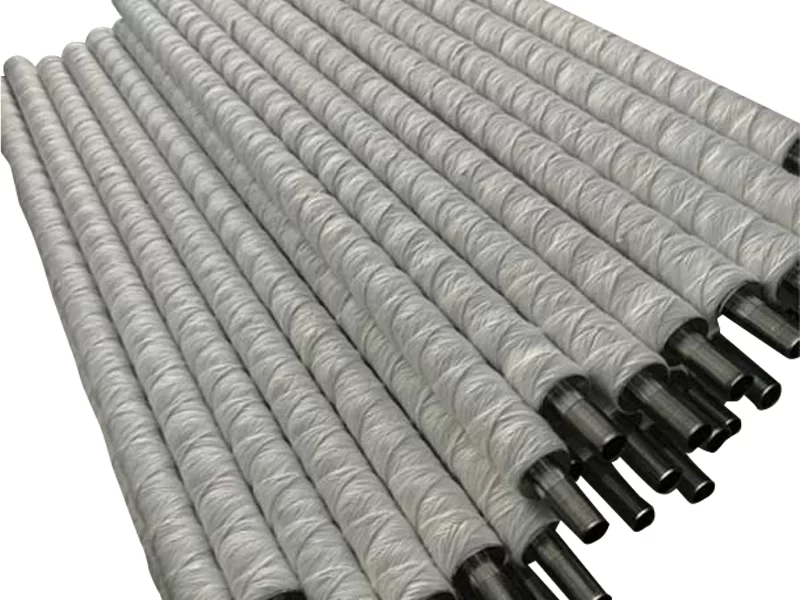Driven by the increasing need for cleaner air in both industrial and residential environments, air filtration technology is developing quickly. Reduced pollutants, better air quality, and public health protection all depend on innovations in this area. Since more people are becoming aware of the health effects of air pollution, the market for air filters has grown significantly globally. The global air purifier market size was estimated at USD 15.94 billion in 2023 and is expected to grow at a CAGR of 7.1% from 2024 to 2030.
So, the top 20 developments influencing air filtration technology in the future are examined in this article, along with their possible uses and effects.
So, the top 20 developments influencing air filtration technology in the future are examined in this article, along with their possible uses and effects.

1. High-Efficiency Particulate Air (HEPA) Filters
The 99.97% of particles as tiny as 0.3 microns that HEPA filters are known to trap are captured. Energy-efficient HEPAs are being made more so by developments in technology that lower pressure drop and increase efficiency.
2. Precipitators by Electrostatics
Using an electrostatic charge, these gadgets clear the air of particulates. They are more efficient now because of recent developments, which also lower maintenance needs.
3. Ultraviolet germicidal irradiation
UV-C radiation is used by UVGI technology to destroy or inactivate microbes like fungus, viruses, and bacteria. All-around air purification is improved by integration with air filtration systems. UVGI is being utilized in HVAC systems and healthcare facilities more and more to stop the transmission of airborne infections.
4. PCO, or photocatalytic oxidation
In order to oxidize and break down pollutants into innocuous materials, PCO mixes UV radiation with a photocatalyst, usually titanium dioxide. Suitable for use in both home and commercial air purifiers, this technology efficiently removes volatile organic compounds (VOCs) and other contaminants. The sales of air filters are expected to record a significant CAGR of 6.26% during the forecast period.
5. Carbon Filters with Activation
Gas and odor adsorption is a very strong suit of activated carbon filters. Their lifespan and capability have been increased by innovations in activation procedures.

6. Nanofiber Filters
Nanofiber technology is the use of very small fibers to produce very effective filters that collect ultrafine particles and nanoparticles. Personal protection equipment, HVAC systems, and car air filters are just a few of the areas where nanofiber filters are becoming more and more popular.
7. Biological Air Filters
The biodegradable materials used to make these environmentally friendly filters lessen waste and environmental effects.
8. Electrospun Nanofibers
High-precision applications requiring electrospun nanofibers are found in sophisticated air filters used in medical and electrical industrial settings.
9. Air Filters That Learn
Real-time monitoring of air quality and filter functioning is made possible by the sensors and Internet of Things connection that smart air filters have. By giving maintenance automatic notifications and useful insights, these filters increase user convenience and efficiency.
10. Plasma Air Purification
Ions produced by plasma technology interact to neutralize airborne pollutants and microbes. Suitable for use in homes and businesses alike, plasma air purifiers effectively lower allergens, germs, and viruses.
11. Filters Enhanced with Graphene
High surface area and conductivity are only two of the special qualities that make graphene a great material for improving filter performance. Optimal for sophisticated air filtration systems, graphene-enhanced filters provide better particle collection and antibacterial qualities.
12. Electret Filters
Particles are drawn to and trapped by electrostatically charged fibres used to make electret filters. Both their durability and effectiveness have increased with recent developments. These high filtration efficiency filters find usage in face masks and HVAC systems among other applications.
13. Hybrid Filters
To improve performance generally, hybrid filters integrate many filtering methods, including activated carbon and HEPA. Suitable for complete air purification, hybrid filters are adaptable and efficient in eliminating a broad spectrum of contaminants.
14. Filters Catalytic
By use of chemical processes, catalysts in catalytic filters degrade pollutants. Catalyst material advances have increased both their lifetime and efficiency.
Especially well at eliminating dangerous gasses and volatile organic compounds, these filters find employment in industrial and automotive settings.
Especially well at eliminating dangerous gasses and volatile organic compounds, these filters find employment in industrial and automotive settings.
15. Metal-organic frameworks, or MOFs
Massively surface area porous materials known as MOFs may absorb a lot of gasses and particles. Because of its great efficiency and possibility for selective adsorption of contaminants, MOFs are being investigated for application in air filtration.

16. Air Ionizer
Particles that are attached to negative ions released by air ionizers cluster together and fall out of the air. Often used in HVAC systems and air purifiers, ionizers effectively lower airborne pollutants and allergens.
17. Filters That Clean By themselves
By using cutting-edge materials and coatings to fend against dirt and pollutants, these filters need less frequent cleaning or replacement. Low maintenance and enduring effectiveness make self-cleaning filters perfect for use in both home and business settings.
18. Ceramic Filters
These filters provide dependable air filtering in hot settings like industry and power production.
19. Personal Air Purifiers
Advanced filtering technologies enable tiny, wearable air purifiers to provide clean air wherever you go. People looking for a defense against allergies and pollution in metropolitan settings are becoming more and more interested in personal air purifiers.
20. Antimicrobial Filters
In order to stop bacteria, mold, and fungus from growing on the filter surface, these filters are treated with antimicrobial chemicals. To maintain sanitary conditions and raise air quality, antimicrobial filters are employed in home air purifiers and hospital settings.
Advanced Air Filtration Technologies Applications
Several industries are using advanced air filtering technologies:
- Residential: For bettering the quality of the air inside, air purifiers, HVAC systems, and personal air purifiers.
- Commercial: To maintain a clean and healthy atmosphere, the hotel, retail, and office sectors all require sophisticated filtration.
- Industrial: To manage pollution and safeguard employees, manufacturing plants, power plants, and other industrial environments need strong filtration technologies
- Automotive: Reducing emissions and preserving the air quality inside cars depend on exhaust filtration systems and cabin air filters.
Conclusion
Air filtration technology has a promising future as ongoing developments will improve air filtration systems’ sustainability, efficiency, and efficacy. This article’s top 20 technologies are propelling major industrial breakthroughs and meeting the increasing need for cleaner air in a variety of applications.
These developments will be essential to enhancing air quality, defending public health, and advancing environmental sustainability as technology develops. Businesses and individuals may choose the finest air filtration solutions for their requirements and make educated choices by keeping up with the most recent advancements.
These developments will be essential to enhancing air quality, defending public health, and advancing environmental sustainability as technology develops. Businesses and individuals may choose the finest air filtration solutions for their requirements and make educated choices by keeping up with the most recent advancements.


